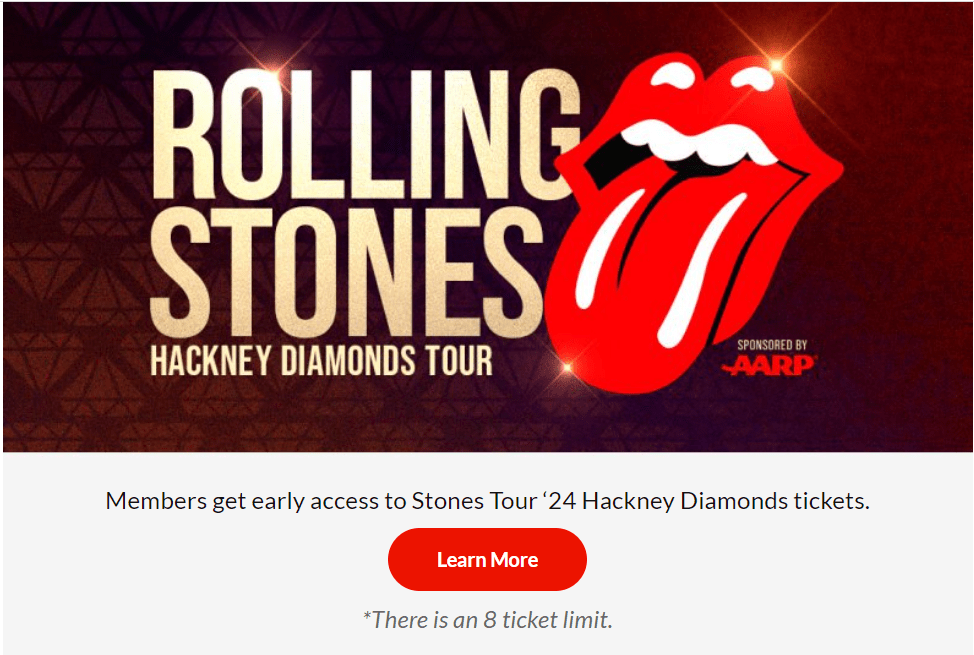
There is SO much money in senior demos, a fact more and more brands are learning…the easy way. And the truly smart, visionary companies are reaping the benefits – increased profits, economic consistency, and a long runway for continued success by serving a massive audience.
All the while, broadcast radio wallows in the “same old, same old,” struggling to just make a quarter while so many other media and entertainment outlets thrive. Even commercial TV and the networks – usually the last to get every memo – are figuring it out. I’ve written before about the seemingly endless stream of reboots of old shows and brands from the ’70s and ’80s. That’s just the beginning.
Earlier this year, The Golden Bachelor – a seniorized version of the familiar franchise – debuted on ABC-TV earlier this year with a single guy in his seventies looking for love. Yes, I wrote a post about Gerry Turner and this new take on this old reality TV concept.
It turns out, it was massively successful – as a more thoughtful version of the theme and in the ratings. Rather than just trying to milk the Bachelor brand for another season, the focus on an older widower looking for love resonated with viewers – of all ages. Who’d have thought younger people would be the least bit interested in a show highlighting singles the age of their grandparents on network TV? But good storytelling always finds an audience.
Recently, Deadline’s Katie Campione wrote this story:
“‘The Golden Bachelor’ Premiere Sets Another Audience Record For ABC & Hulu In 35-Day Viewing”
Campione noted that among adults 18-49, the show’s opener grew 502% from its original rating, racking up nearly four million views in the process.
While there are no details (yet) about a second season or the inevitable female version – The Golden Bachelorette – neither of these eventualities would surprise me.
Unique stories work, especially variations on a familiar theme. While most conventional Bachelor seasons are made up of young, beautiful people trying to become influencers and celebrities, The Golden Bachelor has been about finding true romance during life’s later stages.
Great rock n’ roll wins, too.
That’s the bet the Stones have made…for six decades running. While their new tour is about to begin, it’s been accompanied by a critically acclaimed new album (Hackney Diamonds) that has already been nominated for a “Best Rock Song” Grammy for the single, “Angry.” And that begs the question, is this the first time a group of octogenarians has gone out on tour to support a new album? (I’ll let Sean Ross tackle that one.)
Last week, the Stones announced a sponsor for their new tour:
AARP
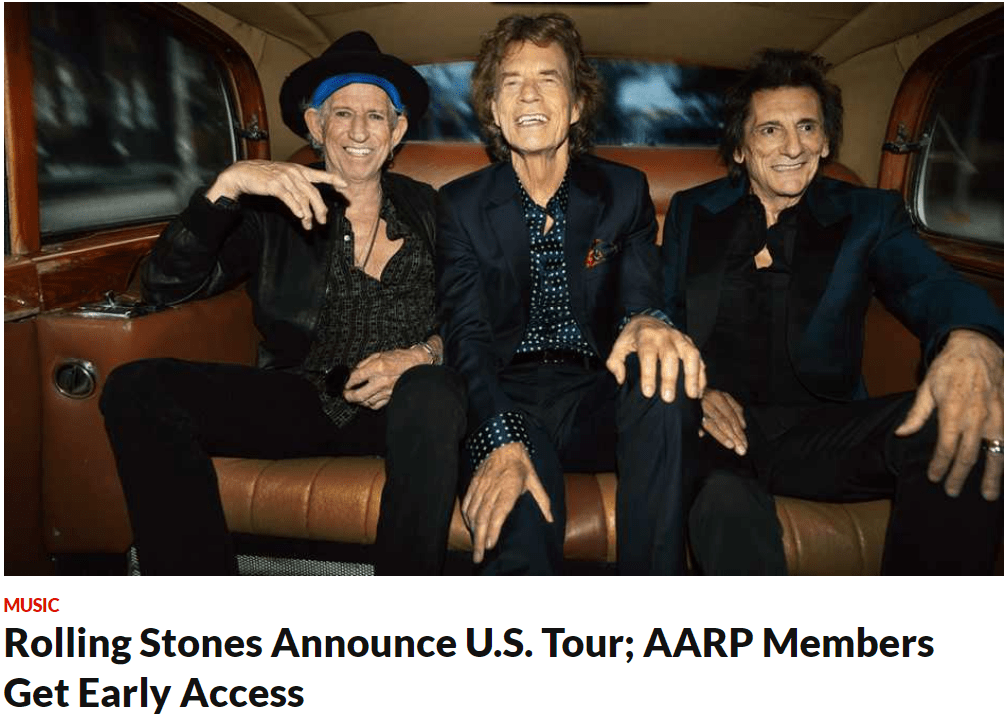
While this may sound like the germ of an SNL skit (perhaps they’ve already done it), the Stones don’t care whether you think having this organization as their title sponsor “makes them look old.”
They are old. They are “beyond Botox.” And they are unstoppable. As the phrase goes, they are laughing all the way to the bank. Look at the photo prominently displayed here and on the AARP website. Keith, Mick, and Ronnie are sitting in the back of a limo worth more than your house. Don’t they look happy? You bet they are.
For the Stones (and others of their generation), it’s not about gray, it’s about green – as much of it as they can rake in for the album, the tour, the merch, and whatever else their fans will fork over cash for to support their amazing brand.
Unlike radio broadcasters who are strangely pickier about the source of the revenue they generate, the Stones are equal opportunity capitalists. The more, the better. (Note the prominent AARP logo in the graphic at the top of this post, just to the right of their classic tongue logo.) The majority of the people who pay the price to see the band on this tour are likely AARP members. It’s a great fit.
Did I mention there are 38 million AARP members in the U.S.? Their database size and ability to connect with their community (not to mention the title sponsorship fee) makes AARP the perfect partner for the Stones.
When you’re confident about who you are, what you are, and your ability to entertain, none of this image nonsense really matters.
And for the Stones, there’s a precedent for this. Back in 1981 during the Stones’ American tour that took place more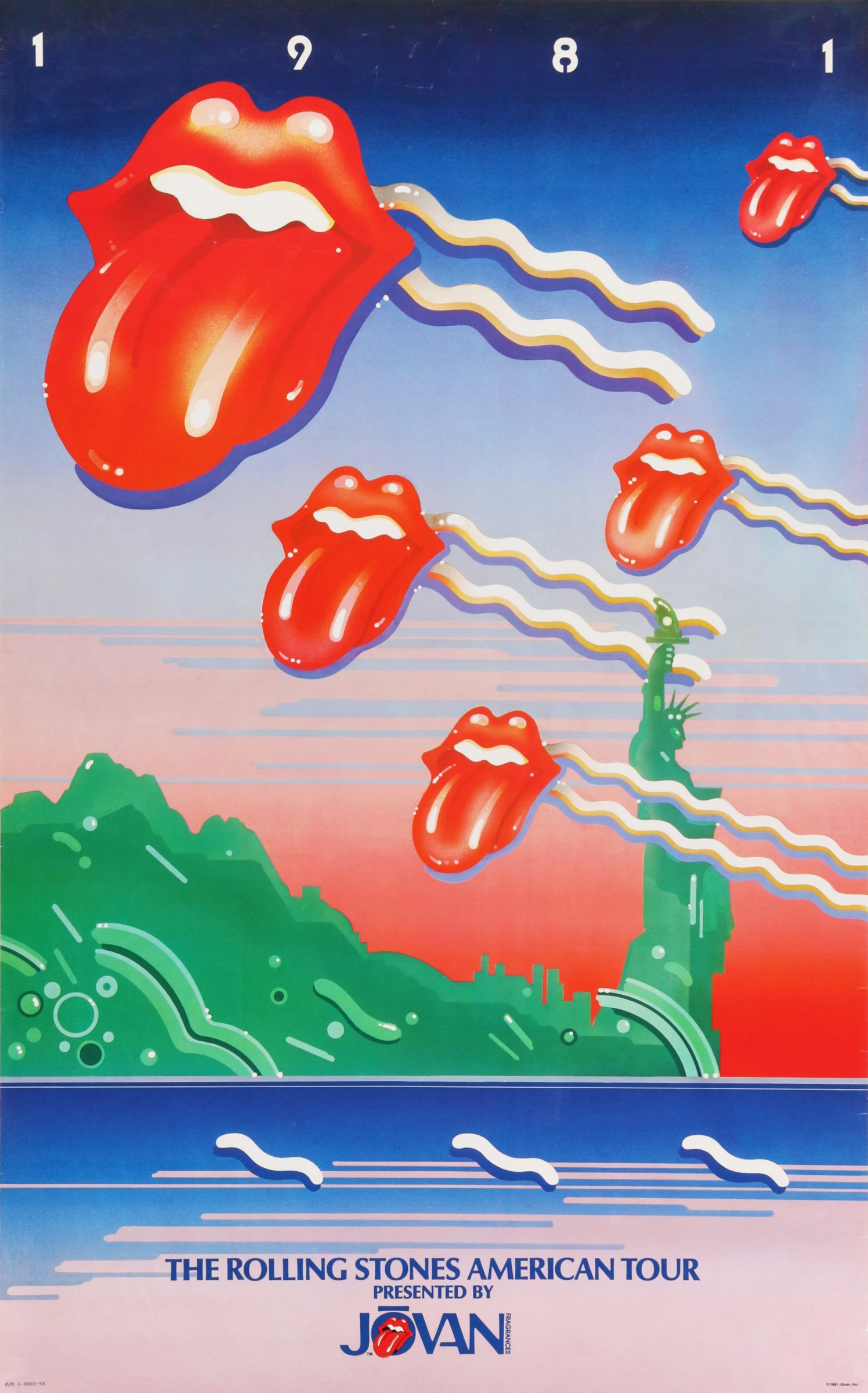 than four decades ago, the band broke ground when they announced a big brand as the title sponsor of that tour, Jovan.
than four decades ago, the band broke ground when they announced a big brand as the title sponsor of that tour, Jovan.
We jaded rockers – yes, I was the PD of WRIF when the tour was announced – were flabbergasted by the move. Were the Stones selling out? Weren’t they making enough money on album sales and concert tickets? And why Jovan of all brands, a female targeted brand of perfumes and other products for women? Wasn’t this a branding error?
Yes, 41 years ago, the Stones took those Jovan dollars and built a massively successful tour.
This year, some fans will need canes and walkers, but this tour – its sponsorship and its trappings – will most certainly fill the Stones’ coffers (no, NOT coffins!).
It will also be a great marketing vehicle for AARP who loves to put vibrant, beautiful mature 50+ celebrities on the cover of their monthly magazine and website. AARP has often been the butt of ridicule and teasing apparently because they advocate for seniors. (Just wait for Mike Jagger to belt out “What a drag it is getting old” when he kicks off “Mother’s Little Helper” from the center of the stage.)
The Stones, of course, are already gracing the AARP website in what promises to be a multimedia effort that will benefit the band and the organization.
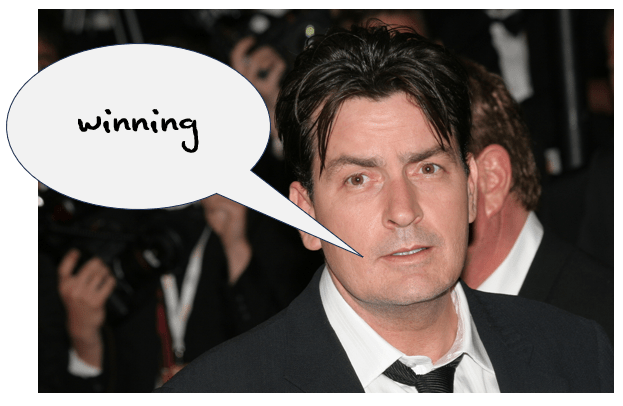 These partnerships and collaborations are called win-wins, certainly the case for the Stones and AARP. But there’s a third “win” for all of us who get to see perhaps the greatest rock n’ roll band of all time. As delusional politicians and crazed actors have both noted, the Stones never get tired of winning.
These partnerships and collaborations are called win-wins, certainly the case for the Stones and AARP. But there’s a third “win” for all of us who get to see perhaps the greatest rock n’ roll band of all time. As delusional politicians and crazed actors have both noted, the Stones never get tired of winning.
And yet for some reason, these exact same 55+ dollars continue to elude radio broadcasters. Marketers have learned leaning into your brand image reveals a confidence in your product and your content. It says you’re comfortable in your own skin – even if it’s a bit wrinkled.
It’s also an indication you’re durable, resilient, and built to last. That’s certainly been the case for the Rolling Stones. Fans of all ages now marvel at their abilities and energy. They’ve overcome the ravages of age, the deaths of band members, illness and health scares, and all the personal trauma that comes along with playing at the highest levels. The same is true for the Eagles, Queen, the Who, and others who haven’t just survived – they’ve endured and thrived.
It’s also true for people of a certain age who have survived life’s twists and turns. Many of the people whose old butts will be filling the seats on the Hackney Diamonds tour will be able to relate to the Stones because they’re survivors, too. And don’t think there’s admiration for this band who have been through it all, especially among those who have also been tested by age, time, and circumstances.

The lesson is that you go with what got you there. For the Stones and many “mature” radio stations, we’re talking about legions of fans who are card carrying AARP members. But remarkably, they’ve earned followings of younger followers along the way. They have cultivated and won over new sponsors and marketing partners tour in and tour out. Similarly, many radio stations that have supposedly “gone over the cliff” have proved their mettle with staying power, reliability, and the ability to cross generations.
When you see the Rolling Stones on this tour, it won’t be hard to miss or marvel at the young people in attendance. The Stones have earned a lot of cred along the way, just like the radio stations and personalities that have stood the test of time.
The Stones haven’t “aged out.” But they’ve embraced who and what they are. And they don’t care what anyone thinks about the average age of their fans.
Radio should follow their lead, supporting existing formats that have gone gray around the temples, as well as dusting off formats abandoned years ago because “we couldn’t sell them.”
The fact is, it’s NOT a drag getting old when you figure out the marketing model that opens the floodgates to new sources of ratings and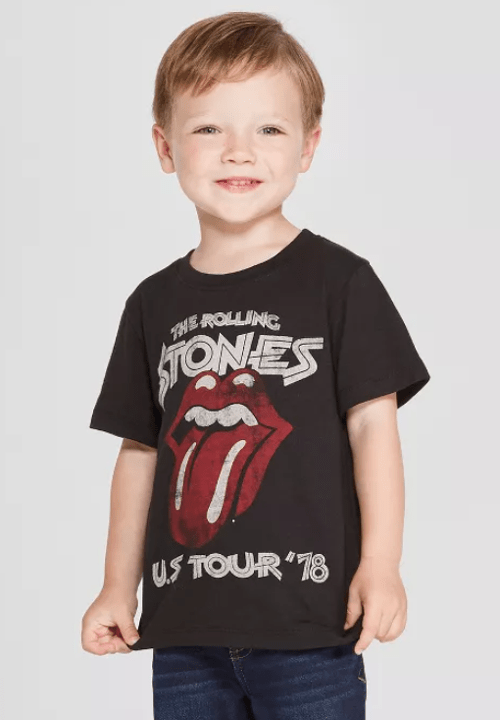 revenue. It’s not shameful. It’s innovative…and highly profitable.
revenue. It’s not shameful. It’s innovative…and highly profitable.
There is money being left on the table, at a time when every dollar needs to be made and maximized. How many jobs could be saved and how much more money could be added to the bottom line if radio were to actually lean into its natural demographic skew?
Check your balance sheets and listen to the excuses on earning calls for failing to “hit goal” yet again. Radio has broader appeal and more marketing power that has been overlooked – by the radio industry itself.
There are viable paths not taken, and big opportunities not fulfilled.
Golden ones.
P.S. And just like that, look what just showed up in my email box!
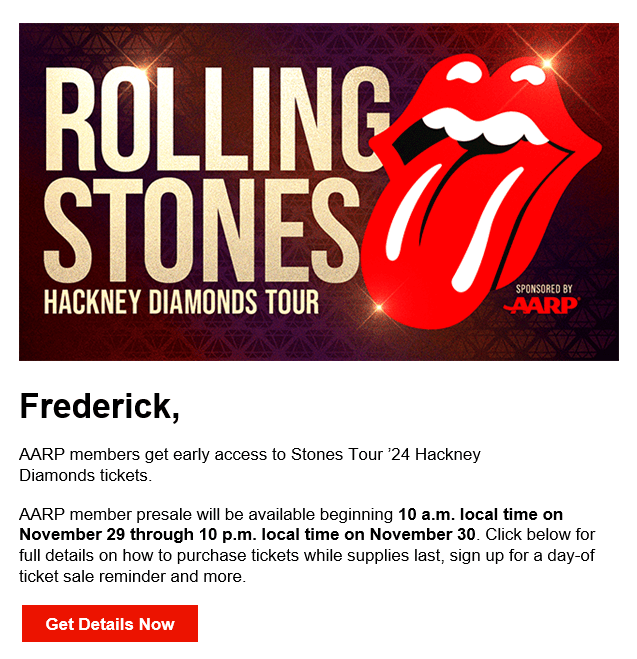
- What To Do If Your Radio Station Goes Through A Midlife Crisis - April 25, 2025
- A 2020 Lesson?It Could All Be Gone In A Flash - April 24, 2025
- How AI Can Give Radio Personalities More…PERSONALITY - April 23, 2025




I’m forwarding this to everyone I’ve worked with over the past 40+ years. Bravo!
Hopefully, that’s a LOT of people. Thanks, Maurice!
Excellent! There’s money with 50-85 year olds. Even AM radio (with the help of networking, FM & digital) can cash in nicely. More life with our REAL Music. And, clearly, the music, the message and the artists last. Thank you, Sir Fred!! 1220watx.com Blending the Classics and Mixing in Local Info.
Thank YOU, Clark!
From one of the best songs on the new album…. says it all…
Now I’m too young for dying and too old to lose
‘Cause I was depending on you, yeah
‘Cause I was depending on you
The Stones never really lose do they?
Longest winning streak in rock ‘n’ roll history.
60 is the new 40.
All I’ll say is that when you hit 70, those numbers break down. 🙂
Is this a column about how relevant old people are to advertisers, or does it really say more about how The Stones are so good that they’re relevant to people young enough to be their great grandchildren.
The thing that makes classic rock so great isn’t that old people like it – they like(d) a lot of music that’s dead and gone (big band, oldies, crooners) – but their kids and grandkids love and respect classic rock. Take a look at a top 40 playlist from the early or mid 70s. Virtually everything on it is forgotten and irrelevant…except the classic rock songs. Boomers are and will grow even more forgotten and ignored, but the music we made when we weren’t lives on. Yes, its a big story that Mick Jagger still has it at 80 (and Sir Paul too), but its a bigger story that people in their 20s and 30s will pay big bucks to see him.
In answer to your two questions, yes and YES.
You’re right about Classic Rock’s pull and universal appeal. While it’s wonderful to reach young people with this great music, devising successful ways to market the 35-64 year-old age cell – like everyone else does.
Not every new song is bad, but some are.
Not every old song is good, but some are.
Not every piece of art is timeless, but some are.
Leonardo’s Mona Lisa was painted in 1503; it continues to draw large audiences.
Today’s world is overflooded with songs; many are mediocre at best with questionable airplay worthiness.
The art of sifting has never been more important for the survival of radio stations.
Stan, this made my day. Thank you.